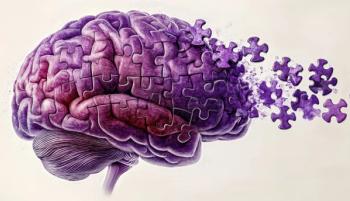
- Vol 32 No 4
- Volume 32
- Issue 4
Therapeutic Lying: A Contradiction in Terms
Therapeutic lying, a concept that is currently seeping into the medical literature, is the practice of deliberately deceiving patients for reasons considered in their best interest.
O what a tangled web we weave, when first we practice to deceive.
-Sir Walter Scott1
[[{"type":"media","view_mode":"media_crop","fid":"34351","attributes":{"alt":"Therapeutic Lying","class":"media-image media-image-right","id":"media_crop_2981882476577","media_crop_h":"0","media_crop_image_style":"-1","media_crop_instance":"3659","media_crop_rotate":"0","media_crop_scale_h":"79","media_crop_scale_w":"125","media_crop_w":"0","media_crop_x":"0","media_crop_y":"0","style":"float: right;","title":"","typeof":"foaf:Image"}}]]Therapeutic lying, a concept that is currently seeping into the medical literature, is defined as the practice of
This essay calls attention to the fact that therapeutic lying is a contradiction in terms-a combination of words whose meanings are in conflict with one another. If “therapeutic” is defined as “having healing or curative powers for the treatment of disease or disability” and “lying” is “making a false statement with the intention to deceive,” lying is not therapeutic and therapy is incompatible with lying. A statement from the Roswell Park Cancer Institute elucidates this:
If there’s one thing sacred in the doctor-patient relationship, it’s trust. Open and honest dialogue on both sides of the exam table is by all accounts critical to effective care. Patients have to be truthful to ensure diagnostic accuracy and an appropriate treatment plan, while doctors need to provide full disclosure about their patient’s health-the good and the bad-to help patients make informed decisions. Indeed, patient autonomy is the cornerstone of modern medicine and
Alternatives to deception
Therapeutic lying in the context of caring for dementia patients is a complex phenomenon. Its potential value is concisely stated in an article concerned with the subject:
Lies that reduce suffering and stress in patients unable to fully appreciate the cause of distress can be beneficial. Clinicians sanction their use in dementia care and see them as a manifestation of the ethical imperatives of beneficence and
As an example of therapeutic lying, a caregiver may tell an argumentative patient with Alzheimer disease and hypertension, who is worrying about his wife’s whereabouts, that “she’s gone to the store” rather than telling the patient, “she died 7 years ago.” In this case, the lie is told to avoid a possible conflict that may cause a rise in blood pressure.
Clearly, in a person without dementia, lying may be disastrous. Consider its impact on the moribund protagonist of Tolstoy’s masterful novella, The Death of Ivan Ilyich:
What tormented Ivan Ilyich most was the deception, the lie, which for some reason they all accepted, that he was not dying but was simply ill, and that he only need keep quiet and undergo a treatment and then something very good would result . . . this deception tortured him-their not wishing to admit what they all knew what he knew, but wanting to lie to him concerning his terrible condition, and wishing and forcing him to participate in that lie.5
Persons with cognitive deficits, it is assumed, will be unaware of such deceptions. This may be a mistaken assumption. The cognitively impaired may intuit being lied to and more aware of deception than one would think. Consider Benjy Compson, the mentally retarded and probably autistic narrator of Faulkner’s The Sound and the Fury, who cannot understand such abstract concepts as time, cause and effect, or right and wrong. Despite his cognitive deficits, he is hypersensitive to order and chaos, immediately sensing the presence of anything bad, wrong, or out of place. He senses, for example, his brother Quentin’s suicide, thousands of miles away at Harvard, and his sister Caddy’s promiscuity and loss of virginity.6
Instead of lying to a patient with dementia, it may be possible to validate the person’s feelings. For example, the hypertensive patient with Alzheimer disease could be told, “It sounds like you’re thinking about your wife. Would you like to tell me more about her?” As the patient starts reminiscing, he may share his underlying feelings. In this way, one neither agrees nor disagrees with his misperception of the wife’s demise.
In addition to validation, redirection might be helpful. Redirection involves diverting attention to something pleasant. With respect to the Alzheimer patient, one could say, “Where is that photo of you and your wife? Can you help me find it?” This validates that the patient misses his wife and redirects him to a different activity. Neither involves lying.
The Alzheimer Association advocates a
Dickinson’s ophthalmic disorder and telling the truth
Although Emily Dickinson recommended telling all the truth, she was adamant that one present it in an oblique and circuitous fashion:
Tell all the truth but tell it slant-
Success in Circuit lies
Too bright for our infirm Delight
The Truth’s superb surprise
As Lightning to the Children eased
With explanation kind
The Truth must dazzle gradually
Or every man be blind8
The reason Dickinson admonished that the truth be presented circuitously may relate to the poem’s last word, “blind.” The lines were written in 1868, 3 years after Emily Dickinson consulted Dr Henry Willard Williams, the premier ophthalmologist at the time, for photosensitivity, eye pain, tearing, and problems with near vision. No records of his diagnostic impressions survive. Iritis, exotropia, and somatopsychic problems are the most frequently conjectured diagnoses.9
Their relationship began on April 15, 1862, when the poet responded to Higginson’s lead article, “Letter to a Young Contributor,” in The Atlantic Monthly (April 1862), which described his role as its literary editor: “Every editor is always hungering and thirsting after novelties. To take the lead in bringing forward a new genius is a . . . fascinating . . . privilege.”
On April 15, 1862, Dickinson wrote an eager letter: “Are you too deeply occupied to say if my Verse is alive? . . . Should you think it breathed-and had you the leisure to tell me, I should feel quick gratitude.”10 She received a traumatizing response from Mr Higginson. The 31-year-old Dickinson had included 4 remarkable poems (“Safe in Their Alabaster Chambers,” “I’ll Tell You How the Sun Rose,” “We Play at Paste,” and “The Nearest Dream Recedes, Unrealized”). Higginson, who had never before seen such original poetry, was astonished by what he received, and “through an excess of caution and a deficit of imagination,”11 responded that they were “spasmodic,” “uncontrolled,” and advised that she “delay publication.”
The poet, who never recovered from Higginson’s letter, was at first bedridden by what she called “surgery”-it stirred up in her “terror” and associations to death: “Mr Higginson, Your kindness claimed earlier gratitude-But I was ill-and write today, from my pillow. Thank you for the surgery-it was not so painful as I supposed.”
The words “bright,” “dazzle,” and “blind” may be linked to Dickinson’s symptoms. She was a master of using the woe in her life in a constructive fashion. It is possible that Dickinson’s anxieties about her ophthalmic problems inform this poem. She was worried about going blind, and it was imperative that Dr Williams level with her about possibly losing her sight, but essential that he “eased / With explanation kind [her worries since] / The Truth must dazzle gradually / Or every man be blind.”
She had already had a traumatic encounter with Higginson, whose unusually blunt words may have resulted in Dickinson’s ophthalmological problems, which may have been psychogenic. In any case, she never again sought to have her poems published.
Dickinson would have found therapeutic lying insufferable, but based on her own experience, would have admonished that slanting the truth could be far more humane.
In lieu of the euphemisticmisnomer: “Lying”
Medical paternalism appears, at times, unavoidable when caring for patients with dementia, and some clinicians defend telling lies to cognitively impaired patients.10 So-called therapeutic lying, however, is a euphemistic misnomer. It should be eschewed and replaced by the clinical methods of redirection, validation, distraction, and substituted
This article was originally posted on August 11, 2014 and has since been updated.
Disclosures:
Dr Sperber is a Consulting Psychiatrist at the Neuropsychiatry/Behavioral Neurology Service of McLean Hospital in Belmont, Mass; and Supervising Psychiatrist at Thriveworks Boston in Cambridge, Mass.
References:
1. Scott WM. Marmion: A Tale of Flodden Field. Edinburgh: J Ballantyne and Co; 1808. Canto VI, XVII.
2. Culley H, Barber R, Hope A, James I. Therapeutic lying in dementia care. Nurs Stand. 2013;28:35-39.
3. Ellison J, Hsu D. A dark side of dementia care. Psychiatr Times. April 15, 2014.
4. Schwartz SK. Is it ever OK to lie to patients? Roswell Park Cancer Institute. November 2010.
5. Tolstoy L. The Death of Ivan Ilyich. New York: Penguin Red Classic Edition; 2006.
6. Faulkner W. The Sound and the Fury. New York: McGraw Hill; 1946.
7. Bier D. Habilitation therapy for Alzheimer’s and dementia care.
8. Dickinson E. Tell All the Truth but Tell It Slant.
9. Blanchard DL. Emily Dickinson’s ophthalmic consultation with Henry Willard Williams, MD. Arch Ophthalmol. 2012;130:1591-1595.
10. Cutcliffe J, Milton J. In defence of telling lies to cognitively impaired elderly patients. Int J Geriatr Psychiatry. 1996;11:1117-1118.
11. Thurman J. Her own society: a new reading of Emily Dickinson. The New Yorker. August 4, 2008.
12. Page JB. Informed consent and substituted judgement. 1999.
Articles in this issue
over 10 years ago
Introduction: The State of Addiction Psychiatryover 10 years ago
Opioid Use Disorder: Update on Diagnosis and Treatmentover 10 years ago
A Brief Review of Gambling Disorder and Five Related Case Vignettesover 10 years ago
An Update on Street and Club Drugs: What Clinicians Need to Knowover 10 years ago
Video Games: Recreation or Addiction?over 10 years ago
The Hoarding of Animals: An Updateover 10 years ago
Reflecting on the Spiritual Manover 10 years ago
Still AliceNewsletter
Receive trusted psychiatric news, expert analysis, and clinical insights — subscribe today to support your practice and your patients.














